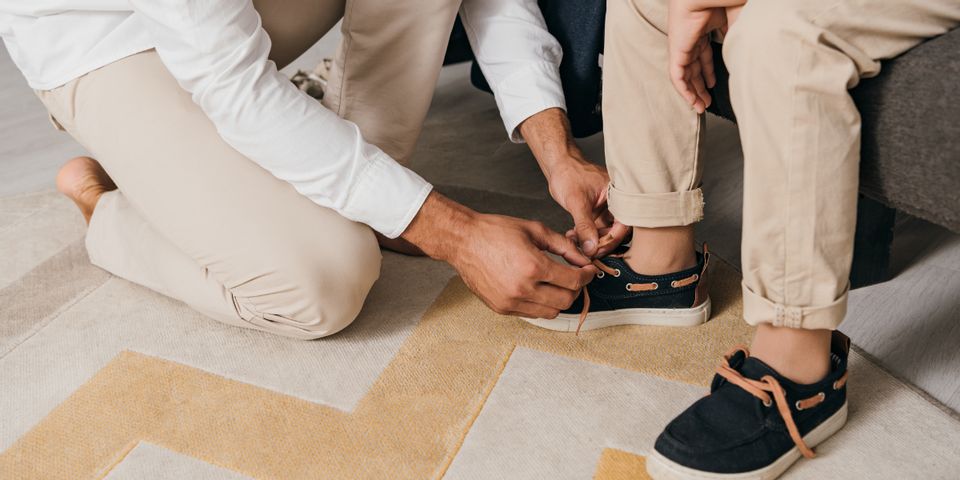A Guide to Foot Pain in Children

Children are just as susceptible to foot pain as adults due to their increased activity levels and still-developing bodies. Parents should be mindful of their children's feet and take all complaints of pain seriously. Use the following guide to learn common signs of foot pain in kids, some possible causes, and how a podiatrist can help.
Signs of Foot Pain
A child experiencing foot pain may complain of discomfort anywhere from the toes to the ankle. Pain can manifest in several ways, including sharp stabs, dull aches, or a burning sensation. Always ask your child where their foot hurts, the type of pain they're experiencing, and any activities they were engaged in when the foot started to hurt.
A child may not express their discomfort, but their foot issues might cause their behavior to change. You may notice your child refraining from certain activities they enjoy, such as participating in sports or games, playing with friends or siblings, or taking the dog for a walk. Their involvement in group sports or physical education may begin to decline.

A child with a painful foot might not want you to see their feet. They're likely afraid that they will have to visit a doctor. Be gentle and encouraging, and explain that a podiatrist can get rid of the pain.
Foot pain can also cause a child to move their body differently. They may put pressure on different parts of the affected foot to avoid painful spots. This coping mechanism can lead to issues with their balance.
Causes of Foot Pain
Many foot issues can trigger pain in children, including:
- Flatfeet: This is a common condition for toddlers learning how to walk. As children get older, they should develop natural arches at the bottom of their feet. Without proper arches, the bottom of the foot will hit the floor. This is caused by an inward rotation of the heel bone, making the foot's natural arch collapse. To relieve pain and correct this problem, a podiatrist can have custom insoles made for your child.
- Ingrown Toenails: Ingrown toenails occur when the sides of the nail grow downward into the skin. In kids, this issue often stems from wearing shoes that are too restrictive. Ingrown nails can also be a problem for children who are learning to clip their toenails. Nails should be cut straight across, not rounded, to minimize the chances of becoming ingrown. Soaking their feet in warm water can help alleviate the discomfort of an ingrown toenail.
- Plantar Fasciitis: Plantar fasciitis is an inflammation of the tissue that runs along the bottom of the foot. It typically is caused by overtaxing certain parts of the foot. Symptoms include searing pain near the heel and tender arches. Plantar fasciitis can be treated by taping the heel and arch with kinesiology tape, stretching the bottom of the feet before rigorous activity, and applying a cold pack to the bottom of the foot for up to 20 minutes.

- Plantar Warts: These primarily develop on the areas of the foot that bear the most weight. They are small growths that can be hard or grainy in texture, and they can cause significant pain, especially when they begin to grow inward. Plantar warts sometimes go away without treatment, but they often require removal, either with an over-the-counter product or a minor surgical procedure.
- Sever's Disease: This disease is a common foot problem in kids, often resulting from a repetitive stress injury in the growth plate at the back of the heel. This spot is also where the Achilles tendon attaches to the heel, and the injury inflames the area and produces significant pain. Fortunately, most cases of Sever's disease pass with time. Treatment includes using ice packs for 10 to 15 minutes, plenty of rest, and supportive shoe inserts that fit under the affected area.
How a Podiatrist Can Help
A podiatrist plays a crucial role in the health and stability of your child's feet. They have the training, skills, and experience to diagnose and treat a wide range of foot ailments. They will assess your child's feet, learn about how the child's pain affects their ability to move around, and identify treatment options. A podiatrist can also let you know whether foot pain is the product of a growth-related problem or an injury.
Children who are heavily involved in sports can benefit from regular visits to a podiatrist. Active kids need to take steps to protect their feet when they're on the field or in the backyard playing. A podiatrist can recommend different methods and products to prevent and treat foot issues, such as braces and tapes to support the feet, tips for proper movement and balance, and ways to prevent overuse and stress injuries.
If your child is experiencing foot pain, contact the Big Foot and Ankle Institute in Gilbert, AZ. Podiatrist Gregory P. Rowe and his team serve patients of all ages and treat arthritis, bunions, hammertoes, plantar fasciitis, and sprains. Call (480) 759-6737 or visit their website to schedule an appointment.
About the Business
Have a question? Ask the experts!
Send your question

